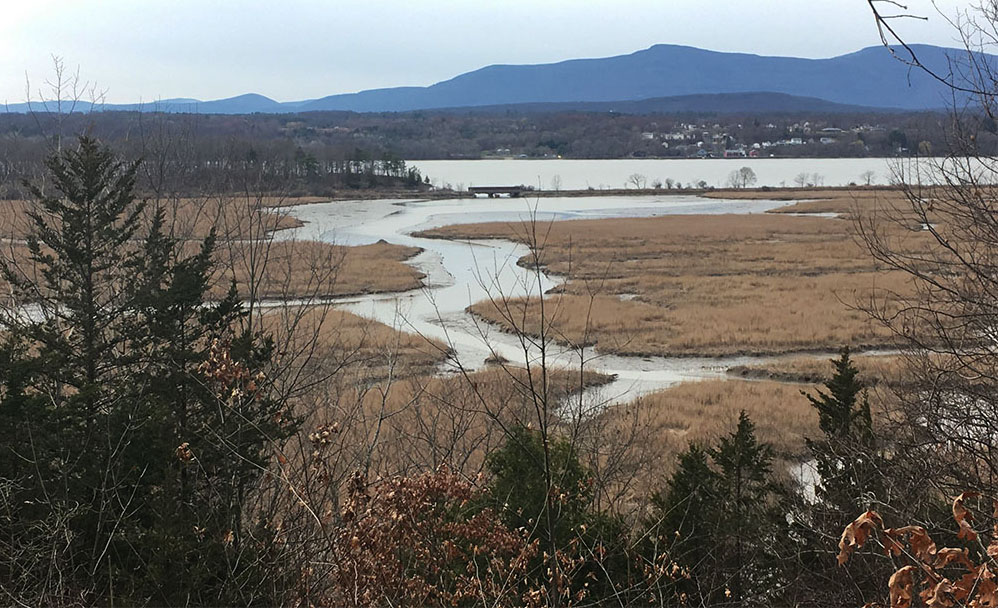The Hudson River estuary in the United States experiences a tide from New York Harbor (river kilometer 0/river mile 0) to Troy, New York (river kilometer 244/river mile 152). In the lower 60 kilometers (37 miles) of the Hudson River, the water is brackish, beyond which freshwater is found. The estuary includes tidal marshes—a type of wetland whose surface is covered and uncovered by tidal flow. Marsh growth occurs through twice-daily tidal ebbs and flows, during which sediments settle out or are trapped by marsh plants. See also: Estuary; River; Salt marsh; Tide; Wetland

Currently, tidal marshes’ vertical growth along the shoreline of the Hudson River estuary is outpacing sea-level rise caused by global climate change, according to a new study reported in the journal Earth Surface Processes and Landforms (December 2020). More specifically, Hudson River tidal marshes are accumulating sediment at a rate of about one centimeter (0.4 in.) per year—two to three times faster growth than the rate at which the sea level is rising. The researchers reported that tidal marshes trap about six percent of the Hudson River’s sediment. See also: Fluvial sediments; Global climate change; River tides; Sea-level rise; Tidalites
More than half of the Hudson River’s tidal marshes are unique insofar as they were artificially formed since 1850 as the result of construction of railroad beds, jetties, and artificial islands along the river’s edge. Such artificially protected areas, in combination with sufficiently available sediment, allow for sediment to settle and to build up into tidal marshes—an important finding for future marsh development or restoration. One reason tidal marshes and the possibility of constructing tidal marshes in the future are important is because marsh plants reduce the risk of flooding by decreasing wave energy during hurricanes or intense storms, thereby lowering the risk of erosion and flooding. Tidal marshes also sequester carbon, improve water quality, and provide critical habitats for plants and animals. See also: Freshwater ecosystem; River engineering





